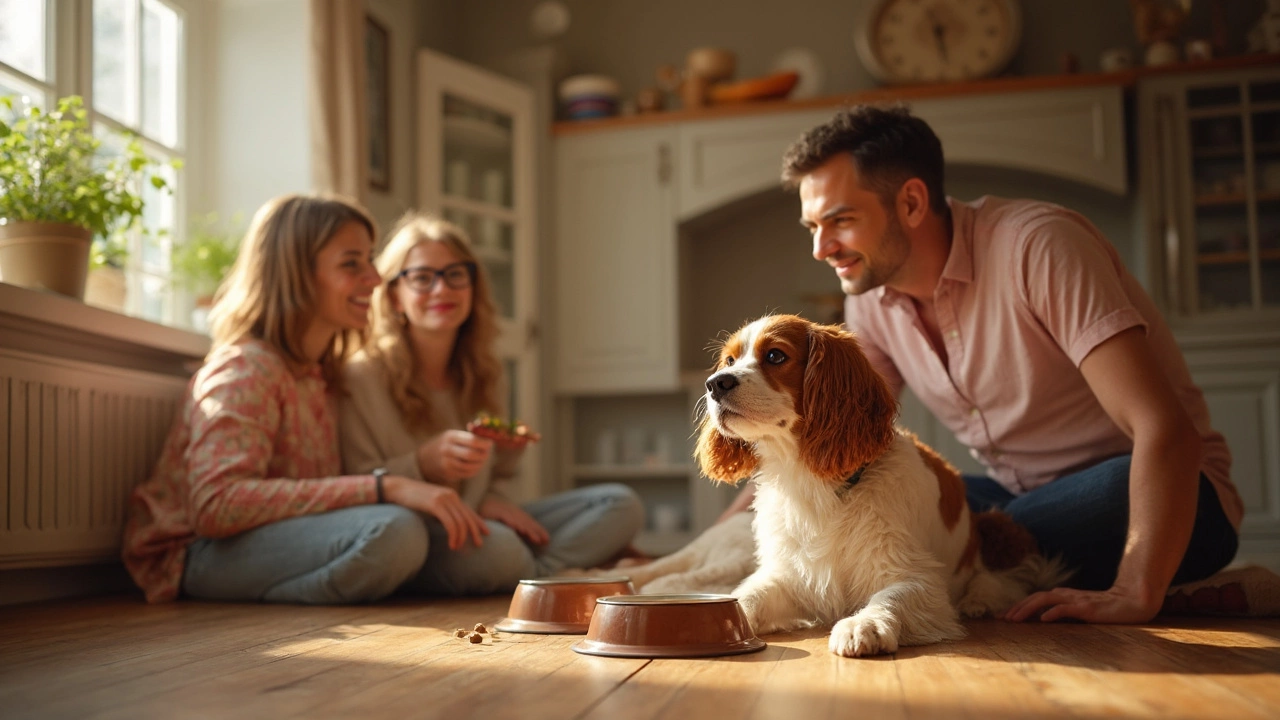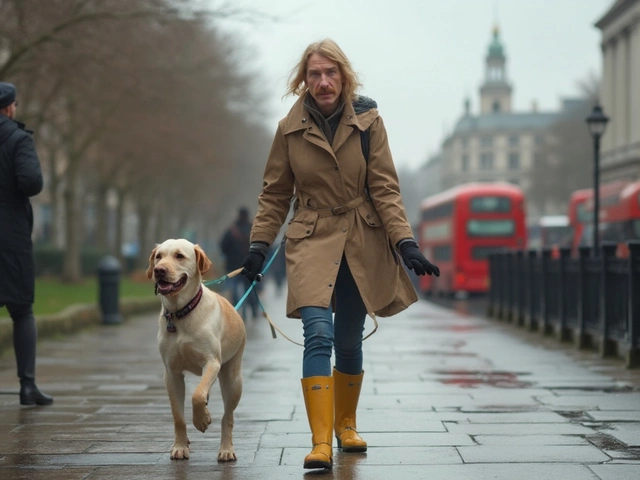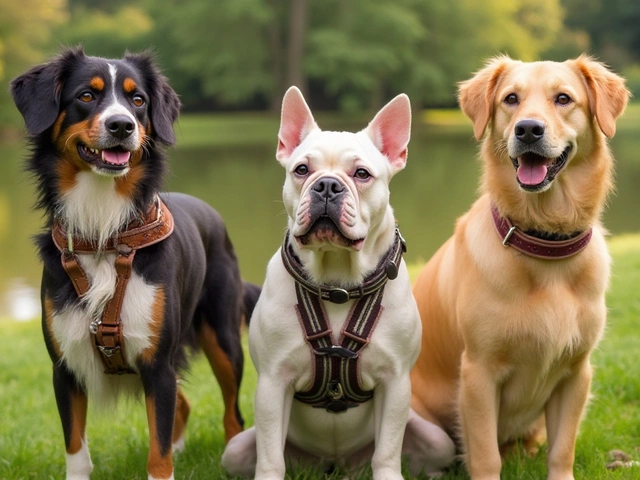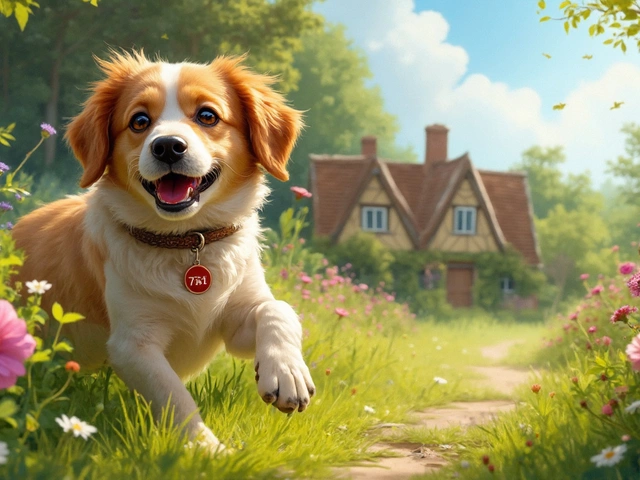Ever had your dog finish dinner and rush right to the door, desperate for a bathroom break? You’re not alone. Most dogs have a pretty direct link between eating and pooping, and once you understand how their little systems work, bathroom time becomes way less mysterious.
In general, dogs want to poop anywhere between 10 minutes to an hour after they eat. Some will run for the backyard right away, while others might take their sweet time, lounging before the urge kicks in. This jump-start happens because eating triggers something in their gut called the "gastrocolic reflex." Basically, food arrives in the stomach, and the intestines go, "Hey, time to make space!" It’s honestly that simple.
If you’re training your dog or just want a routine, paying attention to this timing is a game-changer. Knowing roughly when your dog will need to go gives you a head start and can help you avoid messes inside. Stick around—there’s more to the story, like why puppies seem to poop constantly and how what you feed actually changes the schedule.
- What Triggers Dogs to Poop After Eating?
- How Long Does Digestion Take?
- Puppies vs. Adult Dogs: Big Differences
- Food Types and Digestive Speed
- Tips for Predictable Potty Routines
How Long Does Digestion Take?
Dog digestion isn’t super complicated, but it’s not instant either. On average, food travels from your dog’s mouth all the way out the other end in about 8 to 12 hours. That’s the full digestion cycle—from those first bites to a cleanup bag in your hand.
That said, the urge to poop after eating isn’t because their dinner just zipped through their body. Honestly, it’s more like the food they just ate tells the intestines holding the old stuff, “Hey, clear out—something new is coming!” The actual poop usually comes from meals eaten earlier.
Dr. Jerry Klein, Chief Veterinary Officer at the AKC, puts it this way:
“Most dogs will move their bowels within 30 minutes after eating, thanks to the gastrocolic reflex that signals their colon to make room for new food.”
So, while full digestion takes hours, your dog’s bathroom routine after mealtime relies on this reflex, not the speed of their stomach. If you see your pup pacing or whining after eating, that’s your cue that the system’s kicking in.
The timing isn’t the same for every dog, though. A big dog’s system might need a bit more time than a little terrier, and older dogs usually slow down across the board. If you ever notice your dog isn’t pooping like usual several hours after eating, something might be off, and it could be time to chat with your vet.
The key takeaway: while the actual dog poop timing after eating often feels fast, the food they just ate isn’t what comes out right away—it’s their body making room for it.
Puppies vs. Adult Dogs: Big Differences
Puppies have a lot going on inside their little bellies. Their digestive systems move a lot faster than adult dogs', mostly because they're growing like crazy and need energy all the time. A young pup might need a bathroom trip after every single meal—and I’m not kidding, sometimes it’s within 5 to 15 minutes. If you’re house-training, this fast turnaround can drive you a little nuts, but the upside is you can predict it pretty well.
Adults, on the other hand, chill out a bit. Most grown dogs will have to poop about 30 minutes to an hour after eating. Their systems slow down as they age, and they’re not gobbling up four or five meals anymore. If you change your adult dog’s diet or feeding schedule, expect the timing to shift for a few days while things adjust.
Here’s a quick look at how the bathroom routine changes with age:
| Age Group | Average Time to Poop After Eating | Number of Daily Meals |
|---|---|---|
| Puppy (2-6 months) | 5-30 minutes | 3-4 |
| Juvenile (6-12 months) | 10-45 minutes | 2-3 |
| Adult (1 year+) | 30-60 minutes | 1-2 |
Remember, puppies can't "hold it" as long as adults. Their muscles and brains haven't quite caught up yet, so accidents are common. If you’re raising a pup and juggling work-from-home meetings (guilty as charged), try setting reminders after every meal—they’ll probably need to head out within that 15-minute window.
Adult dogs tend to fall into a more predictable pattern, though don’t be surprised if they need to go earlier or later than usual after extra-large or super-rich meals. Noticing changes in your dog’s routine is a solid way to catch early signs of digestive trouble, especially if you’re tracking that all-important dog poop timing for housebreaking or health reasons.
- If your puppy starts holding it longer: That’s normal as they age! Still, keep a close eye if the change comes on suddenly.
- If your adult dog suddenly needs more frequent bathroom trips: Could be a sign of a diet change, stress, or even a medical problem.
Every dog’s rhythm is a bit different, but understanding these age groups will make your clean-up game way stronger—and way less stressful.

Food Types and Digestive Speed
You might be surprised how much your dog's food affects when they’ll need to poop. The dog poop timing changes a lot depending on ingredients, nutrients, and even how processed the food is.
Kibble (dry food) is probably the most common. It’s designed to be shelf-stable and easy to feed, but it often has more fillers and carbs. Dogs that eat mainly dry food usually poop later—think more toward the hour side of that typical window—because kibble takes longer to work through their system.
Canned or wet food moves faster. More moisture plus fewer fillers mean your dog’s gut doesn’t have to work as hard to break things down. If your pup eats wet food, you might find their poop schedule is quicker, sometimes just 10 or 15 minutes after a meal.
Raw diets or fresh-cooked food are in their own league. Since these foods are less processed and have higher protein, many dogs absorb nutrients quicker and there’s not much left to “move out.” Digestion is efficient, and you might see smaller, firmer poops right after eating—often in the 10–30 minute range.
Treats can throw things off if you give lots of rich snacks or table scraps. Greasy or fatty foods especially can send your dog dashing outside faster than usual. Plus, they might end up with less predictable timing and even tummy trouble.
Cheap foods packed with fillers make dogs poop more often, sometimes outside their normal routine. Better-quality food leads to more regular pooping and actually less mess to clean up. So paying attention to what you’re feeding makes bathroom time both easier and healthier for your pup.
Tips for Predictable Potty Routines
If you want fewer accidents in the house and less guesswork, locking down your dog's bathroom routine is the way to go. The golden rule here? Consistency is king. Feed and walk your dog at the same times every day, and you'll notice bathroom trips start to follow a reliable pattern.
After your dog eats, plan to take them outside within 10 to 30 minutes. Most dogs respond to this window due to that strong gastrocolic reflex—they just need time for the food to signal it's go-time. Puppies process food even faster, so you may need to hustle and get outside within a few minutes.
- Pick a feeding schedule—most dogs do best with two meals a day, spaced about 12 hours apart.
- Take your dog out after every meal. Don’t wait for them to ask; just make it routine.
- Use the same potty spot outside. Dogs love routines and places that smell familiar.
- Stay outside for at least 10 minutes after meals, even if your dog seems distracted.
- If you have a stubborn pooper, walk them around slowly. Movement helps trigger the urge.
Don’t forget that what your dog eats matters too. Foods rich in fiber can speed things up, while fatty or heavy meals might slow things down. If you switch foods, keep an eye on any changes in timing or stool consistency.
Last but not least, always celebrate successes! Keep treats handy and praise your dog when they do their business outside. With a solid dog poop timing plan, your life—and your carpet—will thank you.





